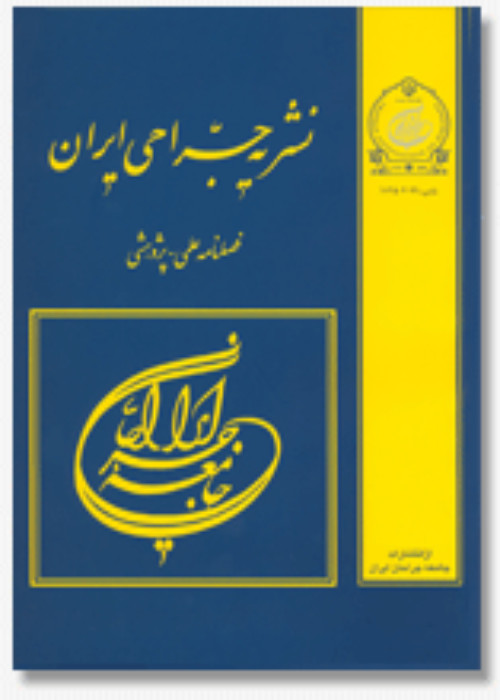Evaluation of results and complications of surgery in patients with pulmonary Aspergilloma between 2000- 2010
Author(s):
Abstract:
Introduction &
Objective
Surgical resection is the only effective long-term treatment of pulmonary aspergilloma, but due to the high rate of complications during and after surgery, using this technique remains controversial. The present study was conducted with the purpose of evaluating the results and complications of surgery in patients with pulmonary aspergilloma referring to Masih Daneshvari Hospital from 2000 to 2012.Materials and Methods
In a cross-sectional study, 43 patients referring to Masih Daneshvari Hospital from 2000 to 2012 who had undergone surgery for pulmonary aspergilloma were evaluated using a retrospective and clinical review method. At the end of the project, to follow patients, they were called to refer to Masih Daneshvari Hospital. In the visit, the patients underwent clinical examination and digital chest radiography so that in case of complications or possible relapse, in addition to carrying out the research project, the necessary treatments are also provided. The data in the questionnaire and forms were analyzed with SPSS software, version 16, and descriptive statistics.Results
In reviewing the symptoms hemoptysis with 90.69% was the most common observed symptom. Lobectomy with 15 cases (34.9%) was the most common surgical operation performed on the patients. 18 patients (41.87%) were infected with tuberculosis. In the study of pulmonary lobes, the right upper lobe with 16 cases (37.2%) had the highest involvement. 26 patients (60.46%) experienced complications during hospitalization. Incomplete lung expansion with 12 cases (27.9%) was the most common complication. The most common complications treatment during hospitalization was by chest tube suction in 10 patients (23.25%). Average hospital discharge was 14.53± 13.00 days (4-60 days) after surgery. A total of 14 patients experienced complications after discharge that bleeding and incomplete expansion of the lungs each with 4 cases (3.9%) were the most common complications. A total of 5 patients (11.62%) died. 2 patients died in hospital and 3 patients died after discharge during the follow-up. There was no case of relapse among patients in the follow-up period.Conclusions
Overall, from the above study, it is deduced that with proper selection of fungus ball patients for surgery, wise and careful selection of surgical technique and appropriate follow-up care of patients after surgery, one can reduce postoperative complications, in which case pulmonary fungus ball surgical treatment is a reliable treatment that besides controlling clinical symptoms of the patient, it is able to eradicate this organism and eliminate the underlying pulmonary cause of the disease. Keywords:
Language:
Persian
Published:
Iranian Journal of Surgery, Volume:24 Issue: 2, 2016
Page:
38
magiran.com/p1567125
دانلود و مطالعه متن این مقاله با یکی از روشهای زیر امکان پذیر است:
اشتراک شخصی
با عضویت و پرداخت آنلاین حق اشتراک یکساله به مبلغ 1,390,000ريال میتوانید 70 عنوان مطلب دانلود کنید!
اشتراک سازمانی
به کتابخانه دانشگاه یا محل کار خود پیشنهاد کنید تا اشتراک سازمانی این پایگاه را برای دسترسی نامحدود همه کاربران به متن مطالب تهیه نمایند!
توجه!
- حق عضویت دریافتی صرف حمایت از نشریات عضو و نگهداری، تکمیل و توسعه مگیران میشود.
- پرداخت حق اشتراک و دانلود مقالات اجازه بازنشر آن در سایر رسانههای چاپی و دیجیتال را به کاربر نمیدهد.
In order to view content subscription is required
Personal subscription
Subscribe magiran.com for 70 € euros via PayPal and download 70 articles during a year.
Organization subscription
Please contact us to subscribe your university or library for unlimited access!


